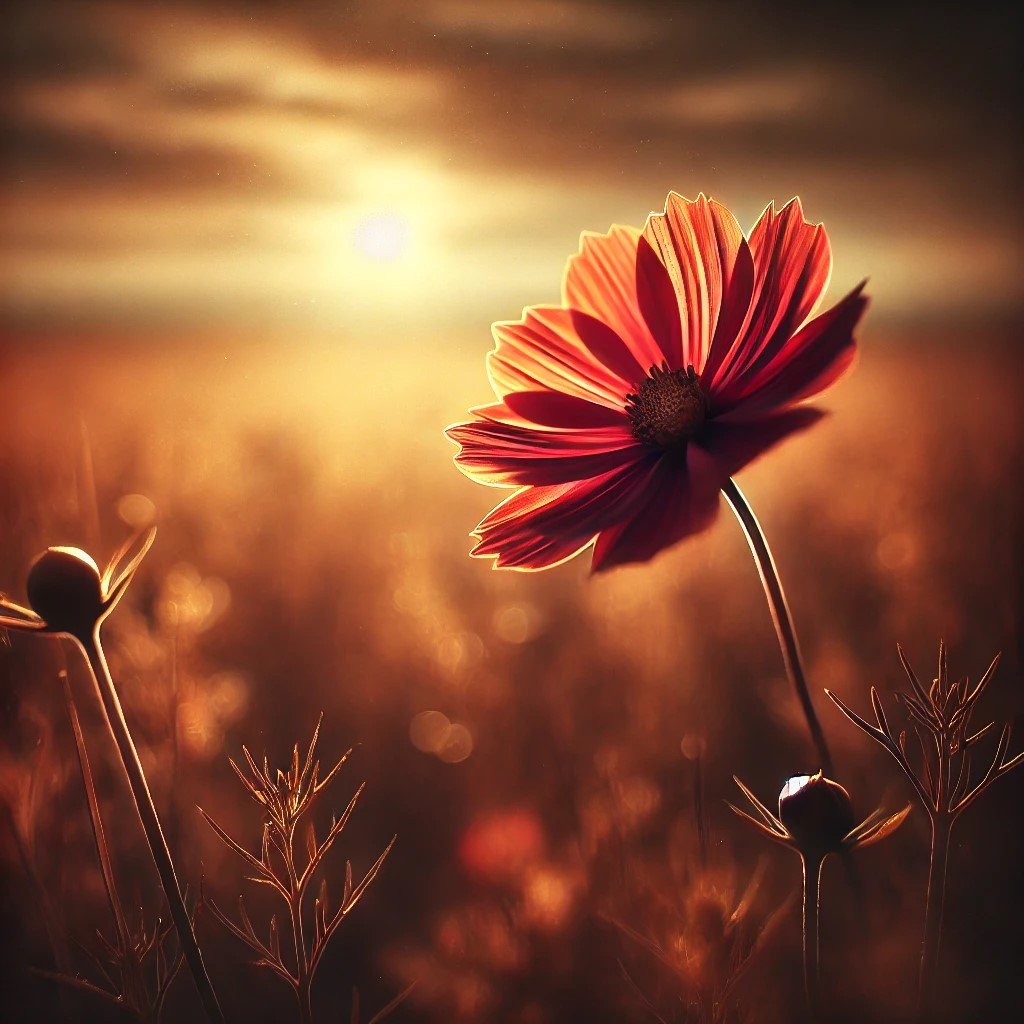A Flower without a Bee
We often admire flowers as singular, beautiful things—delicate, intricate, and seemingly complete. Yet, the very essence of a flower is not about self-contained beauty but about connection. Flowers exist in the way they do—bright, fragrant, open—not for themselves, but to draw in pollinators. What appears as their defining characteristics are entirely shaped by their relationship to something else.
This same paradox applies to us as humans. We see ourselves as distinct individuals, yet everything that makes us who we are—our bodies, our thoughts, even our sense of self—exists because of adaptation to something beyond us. Like the flower, we are not self-contained but relational, shaped by forces larger than ourselves. Our experience can often feel isolating and without purposes. And yet, perhaps it is in the very act of trying to claim some distinct sense of “I” that we find ourselves alone. Perhaps it is precisely like trying to understand a flower without the bee.
Humans did not evolve in isolation. Our physical form, emotions, and cognition all emerged through adaptations to external conditions. Our upright posture evolved in response to open landscapes, our hands developed for tool use, and our brains expanded not in isolation but in response to the complexities of social life. Even our emotions—attachment, love, longing, anger—are not private, internal events, but deeply social signals, honed over millennia to maintain connection.
From this perspective, selfhood is not a fixed, independent thing. It is an ongoing response to the world. We feel like individuals, yet we are fundamentally relational beings, our existence and experience woven into the fabric of something much larger.
In modern life, especially in Western culture, we are often taught that strength comes from independence, that selfhood means standing apart. But what if the opposite is true? What if, like the flower, our full expression emerges not from self-sufficiency but from connection? What if the traits we prize—intelligence, resilience, self-awareness—are not things we own but things that arise in response to relationships, to challenges, to the very existence of others? Indeed, I think we get actually get it right when we experience our lives as meaningless, pointless, and without purpose; precisely because we are attempting to understand our thoughts, feelings, and behavior without looking at the relationships and forces that shape us.
Therapy often involves helping people reclaim a sense of self, but this does not mean reinforcing the illusion of separateness. Instead, it means recognizing that selfhood is dynamic, formed and re-formed in response to the people and world around us. Like the flower, we do not lose ourselves in connection; we become ourselves through it.
If we accept that selfhood is relational, how does that change the way we move through the world? It invites a different kind of self-inquiry—one that does not ask Who am I? as if there were a single answer, but How am I responding? What am I adapting to? Where is my identity shaped by love, by fear, by the need for belonging?
In relationships, this awareness can shift how we approach connection. We may believe that to be fully ourselves, we must protect our individuality, but perhaps the opposite is true. Like a flower that cannot bloom without the presence of a pollinator, our deepest self is not something we guard but something we offer—something that takes shape in response to the presence of another.
At The Center for Couples and Self, we explore selfhood not as something to defend but as something to engage with. Whether in individual or couple therapy, the work is not about reinforcing separateness but about understanding how we are shaped by our relationships, our histories, and the deep, often unseen forces that make us who we are.
If this resonates with you, or if you find yourself questioning where you end and where others begin, let’s explore it together.

